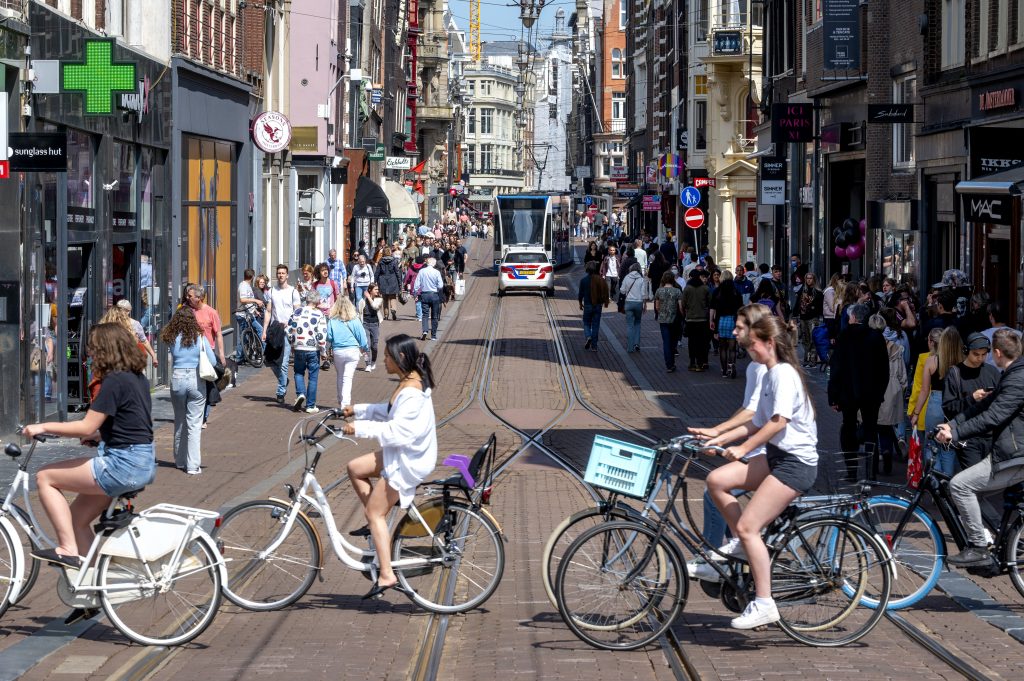
City life is attractive. At the same time, air pollution, noise pollution, and a lack of green space threaten the mental health of urban dwellers. Because of increasing urbanization, it is imperative that researchers better map the interaction between different risk factors for mental problems. That’s what Junus van der Waal and colleagues from the Center for Urban Mental Health at the University of Amsterdam suggest Lancet Psychiatry.
“In countries where more than 50 to 60 percent of the population lives in cities, people often suffer from depression, anxiety, and addiction,” van der Waal says. This is evidenced by an analysis of data from 191 countries, from the United Nations. “In the Netherlands, 91 percent of the population lives in an urban area and these problems are fairly common.”
interaction
According to van der Waal, researchers typically look at the influence of one or two risk factors for mental illness. Such as the effect of noise pollution on the development of anxiety disorders. But it is often an interaction of several factors, which can reinforce each other. If many people in a given area have psychological problems, this could, for example, have a negative effect on social cohesion in the neighborhood, which in turn can have a negative impact on residents, says van der Waal. This is why researchers argue for an interdisciplinary approach, in which scientists investigate how different factors interact over time.
For clarity, the researchers introduced the character Jane. She lives in an apartment near a busy road and regularly worries about her financial situation. Constant traffic noise and lighting hamper her sleep. This has a negative effect on her performance at work, causing her to experience more stress and financial worries, on top of that, she sleeps worse. In addition, long-term exposure to air pollution has a negative effect on the functioning of her brain. All of these factors combined can cause depression over time.
In addition to individual therapy, building a garden between Jane’s apartment and a busy road can be a way to reduce her depressive symptoms. Van der Waal: The presence of greenery appears to be associated with lower depressive moods. For example, green has a mitigating effect on noise pollution and reduces air pollution. Creating enough places where local people can meet can also be good for social cohesion in the neighbourhood. All of this can have a positive effect on mental health.
Healer
Based on a meta-analysis over the past 30 years, researchers have identified urban factors that can influence people’s mental health. In addition, they present a new conceptual framework, which considers the influence of urban factors such as city size, migration, emergence of the built environment, social cohesion and individual neurobiological characteristics on the development of mental disorders. This framework serves as a basis for future research into mental health problems and disorders in urban areas.
Understanding how all of these factors interact throughout life can reveal new goals for treatment and policy. It is important for therapists and policymakers to be aware of all the conditions that contribute to the development of depression, anxiety, and addiction. At the urban, social and individual level.
COVID-19
Also during the pandemic, it has been shown that urban dwellers face specific challenges that can have a negative impact on mental health. Van der Wal: “For example, they usually lived in smaller places and it was sometimes difficult in cities to avoid crowded places.”
Currently, more than 50 percent of the world’s population lives in cities. This is expected to reach about 70% by 2050, which will also increase the number of psychological problems. “The goal of our center and this research is to contribute to a healthy city with fewer mental problems.”
Read also

“Coffee buff. Twitter fanatic. Tv practitioner. Social media advocate. Pop culture ninja.”











More Stories
Which can cause an increase in nitrogen.
The Central State Real Estate Agency has no additional space to accommodate Ukrainians.
The oystercatcher, the “unlucky national bird,” is increasingly breeding on rooftops.